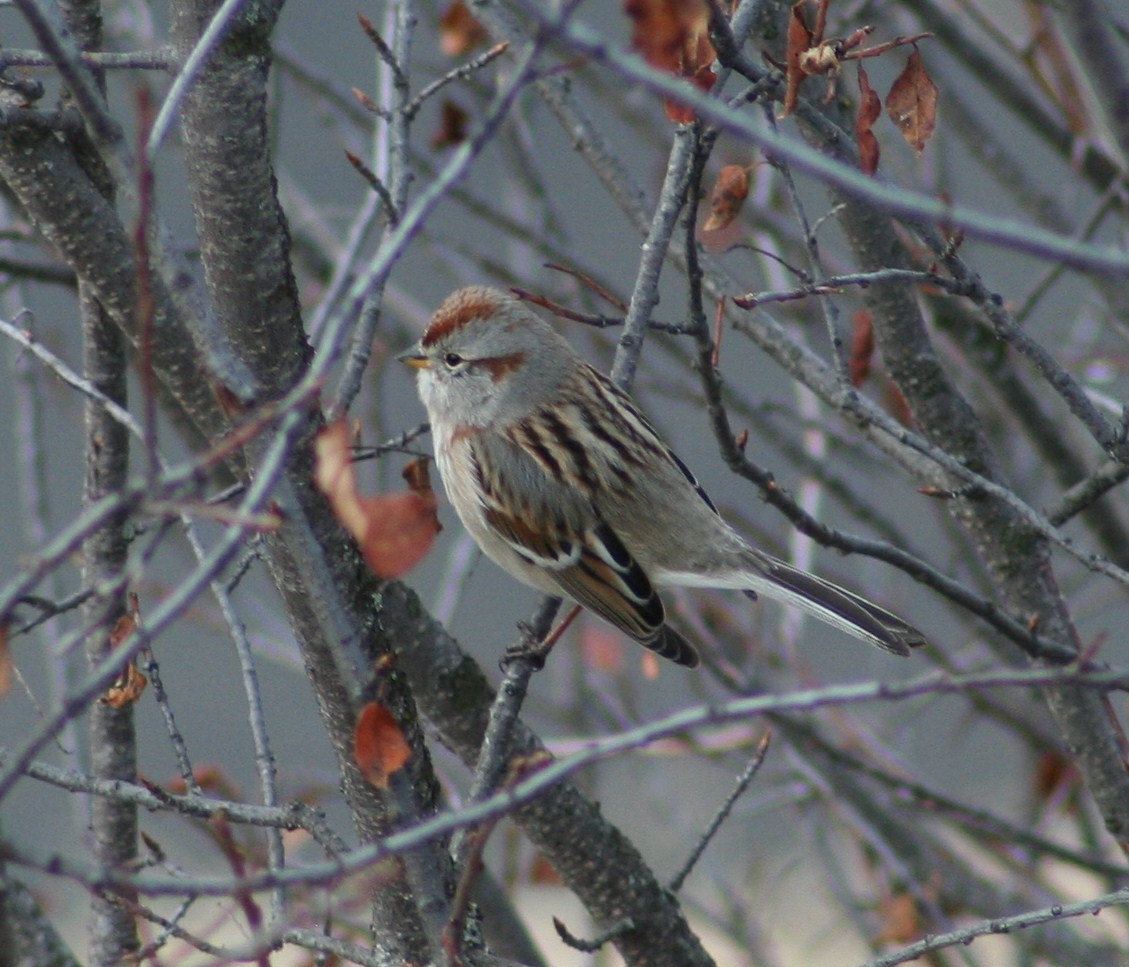
Tree Sparrows Return
November 18th, 2011
Block title
 By: Kate StoneM.S. Avian Scientist
By: Kate StoneM.S. Avian Scientist

About the AuthorKate Stone
Kate graduated from Middlebury College with a B.A. in Environmental Studies and Conservation Biology in 2000. She pursued a M.S. in Forestry at the University of Montana where her thesis focused on the habitat associations of snowshoe hares on U.S. National Forest land in Western Montana. After completing her M.S. degree in 2003, Kate alternated between various field biology jobs in the summer and writing for the U.S. Forest Service in the winter. Her fieldwork included projects on small mammal response to weed invasions, the response of bird communities to bark beetle outbreaks and targeted surveys for species of concern like the black-backed woodpecker and the Northern goshawk. Writing topics ranged from the ecology and management of western larch to the impacts of fuels reduction on riparian areas.
Kate coordinates bird-related research at the MPG Ranch. She is involved in both original research and facilitating the use of the Ranch as a study site for outside researchers. Additionally, Kate is the field trip coordinator and website manager for the Bitterroot Audubon Society. She also enjoys gardening and biking in her spare time.
Kate graduated from Middlebury College with a B.A. in Environmental Studies and Conservation Biology in 2000. She pursued a M.S. in Forestry at the University of Montana where her thesis focused on the habitat associations of snowshoe hares on U.S. National Forest land in Western Montana. After completing her M.S. degree in 2003, Kate alternated between various field biology jobs in the summer and writing for the U.S. Forest Service in the winter. Her fieldwork included projects on small mammal response to weed invasions, the response of bird communities to bark beetle outbreaks and targeted surveys for species of concern like the black-backed woodpecker and the Northern goshawk. Writing topics ranged from the ecology and management of western larch to the impacts of fuels reduction on riparian areas.
Kate coordinates bird-related research at the MPG Ranch. She is involved in both original research and facilitating the use of the Ranch as a study site for outside researchers. Additionally, Kate is the field trip coordinator and website manager for the Bitterroot Audubon Society. She also enjoys gardening and biking in her spare time.
Kate coordinates bird-related research at the MPG Ranch. She is involved in both original research and facilitating the use of the Ranch as a study site for outside researchers. Additionally, Kate is the field trip coordinator and website manager for the Bitterroot Audubon Society. She also enjoys gardening and biking in her spare time.
Previous Dispatch:
Other Dispatches
Related Dispatches
Related Research
2024 publications by the MPG plant-soil feedback group
January 3rd, 2025



















